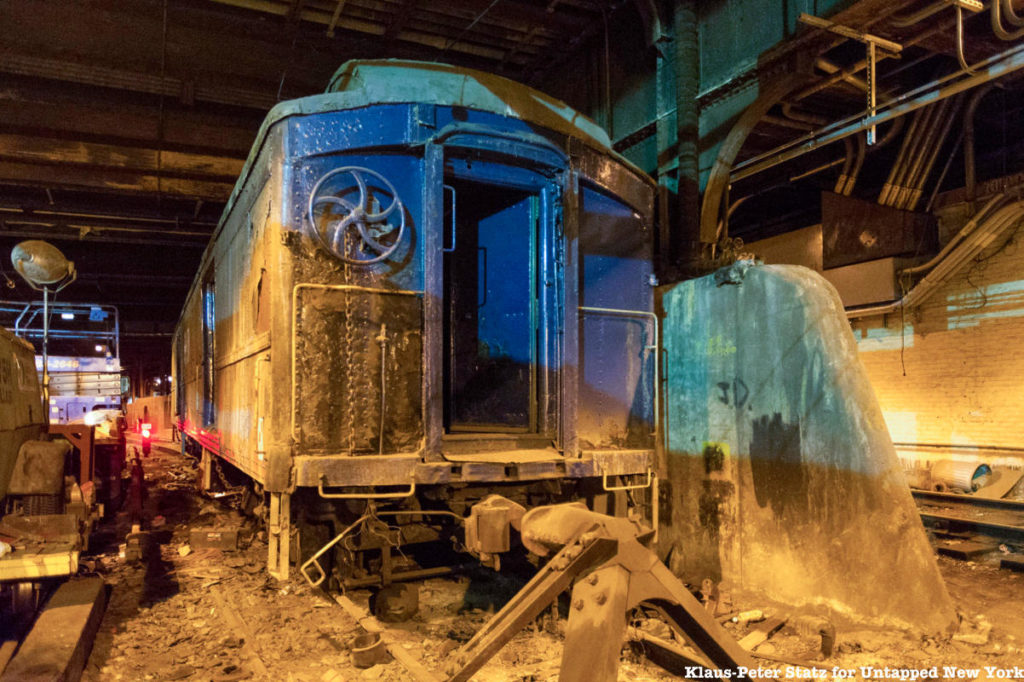2. FDR’s infamous train resided for decades on Track 61

As the legend goes, a bullet-proof, armor-plated Pierce-Arrow limousine transported President Franklin Delano Roosevelt, paralyzed from the waist down from polio, onto his own train car that would then arrive at Grand Central on Track 61. Afterward, the limousine is said to have been driven directly onto the platform and then onto an elevator that rose into the Waldorf-Astoria Hotel. Unsurprisingly, this fantastical story remains nothing more than a myth. In 2019, Untapped New York debunked it through a detailed investigation.
For years, the MNCW #002 has been photographed and written about at length in reference to its role as FDR’s private train car. Daniel Brucker — known also for his part in spreading the opal clock myth — ardently popularized the belief. In reality, as opposed to serving as FDR’s private train, MNCW #002 was rather utilitarian in nature, existing as a “tool car” or “baggage car” to hold blocks, frogs, and other tools needed to clear and re-rail a train car. As a result of being used for storage under Grand Central, the train escaped being scrapped, making it one of the only cars left of its era in Grand Central history. It currently resides at the Danbury Railway Museum where it was relocated in 2019.
Ultimately, the story of FDR’s train car and track 61 can be easily dissolved by closely examining the structure and materials used throughout the train car and the Waldorf-Astoria. Though the widest door of the baggage car could potentially have fit an armored plated limousine, it would have been impossible for the limousine to turn and fit within the baggage car itself. While the elevator from Track 61 exists, it opens into the Waldorf-Astoria garage, not directly into the hotel as the myth supposes it does.
In addition, though Bruckner claimed that the glass windows that line the clerestory of the train “were converted gun ports,” that could protect the President, the windows were instead simply used for ventilation. In fact, the windows of MNCW #002 can be seen on many train cars made during the same time period, including August Belmont Jr.’s private car. As Karl Zimmerman wrote in Trains Magazine, “[Dan] Brucker is the true believer of the ‘FDR siding’ mystique and the keeper of the flame.”





